If you’ve ever had a houseplant that just wouldn’t grow no matter how much you fertilized it or how often you watered it, it might have been root bound. Root bound is a condition that houseplants can get when their roots have become too big for their pot and have started to circle around the inside of the pot, choking off the plant’s growth. While it might seem like there’s not much you can do for a root bound plant, there are actually a few things you can do to help it.
What Does ‘Root Bound’ Mean?
This usually happens when a plant is grown in a pot that’s too small, or when the roots have been allowed to dry out. When a plant is root bound, it means the roots have become so tightly packed that they’ve started to strangle the plant.

If your plant is root bound, you’ll need to repot it into a larger pot. Be sure to use fresh potting mix, and water the plant well. If the roots are very dry, you may need to soak the plant in water for a few hours before repotting.
With proper care, your plant should soon start to thrive. Once your plant is in a new pot, be sure to water it regularly and fertilize it monthly.
What Causes Snake Plants to Become Root Bound?
The roots have nowhere to go and begin to crowd the pot. A snake plant that becomes root bound has a root system that has become too large for the pot it is in. This can happen for a number of reasons, including:
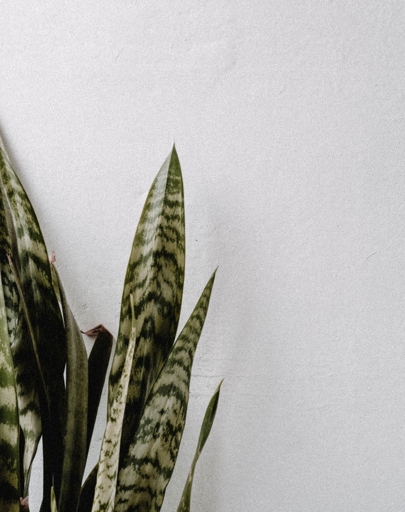
The plant will become root bound as the roots fill up the pot. The pot is too small: A pot that is too small will not give the roots enough room to grow.
This can happen if the pot does not have enough drainage or if the plant is not getting enough water. The plant is not getting enough water: If the plant is not getting enough water, the roots will not be able to grow.
The plant is not getting enough light: If the plant is not getting enough light, the leaves will begin to yellow and the plant will become root bound.
The plant is not getting enough nutrients: If the plant is not getting enough nutrients, the leaves will begin to yellow and the plant will become root bound.
If your snake plant becomes root bound, there are a few things you can do to fix the problem.
This will give the roots enough room to grow. Choose a pot that is twice the size of the pot the plant is currently in. The first thing you need to do is to repot the plant.
Water the plant deeply and allow the water to drain out of the pot. Do not water the plant again until the soil is dry. Next, you need to make sure the plant is getting enough water.
Place the plant in a location where it will get at least six hours of direct sunlight each day. Finally, you need to make sure the plant is getting enough light.
How to Tell If Your Snake Plant Is Root Bound
One thing you might not know how to spot, however, is if your snake plant is root bound. If you’re a plant parent, you know that it’s important to check on your plants regularly to make sure they’re healthy and happy.

This can happen for a few reasons, but the most common is simply that the plant has outgrown its pot. Root bound means that the roots of the plant have become too crowded in the pot and are now growing in a circular pattern.
If your snake plant is root bound, you’ll notice a few things. The leaves might also start to yellow and the plant might overall just look unhealthy. The first is that the plant might start to lean to one side, as the roots are no longer able to support the plant evenly.
With a little TLC, your snake plant will be back to its old self in no time! If you think your snake plant is root bound, the best solution is to repot it into a larger pot. Be sure to use fresh potting mix and give the plant plenty of room to grow.
[1] Roots Spiraling Around the Container
Root bound snake plants are common, but luckily, there are a few things you can do to fix the problem. This means the roots have filled the pot and are growing in a circular pattern. If you notice your snake plant’s roots spiraling around the container, it’s likely root bound.
First, you’ll need to replant your snake plant in a larger pot. You can also loosen the roots before replanting to give them more room to grow. Be sure to use a pot with drainage holes to prevent the roots from sitting in water.
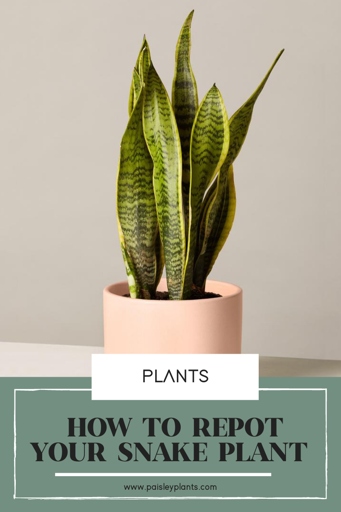
Once your snake plant is in a new pot, be sure to water it regularly. With proper care, your snake plant should soon be back to its healthy self. Allow the soil to dry out between waterings to prevent the roots from rotting.
[2] No New Growth or Stunted Growth
This means that the roots have become too crowded and are not able to get the nutrients they need to support the plant. The solution is to replant the snake plant in a pot that is twice the size of the current pot. Once the plant is replanted, it should start to show new growth. Be sure to use fresh potting mix and water the plant well. If your snake plant is not growing or if the growth is stunted, it is likely due to the plant being root bound.
[3] Yellowing of the leaves
If your snake plant’s leaves are yellowing, it could be a sign of root bounding. This means that the roots have become too crowded and are not getting enough oxygen. The solution is to replant the snake plant in a larger pot with fresh soil. You can also try watering it less frequently.
[4] Leaves wilting or curled
This can happen if the plant is pot-bound, meaning the pot is too small for the plant, or if the roots have become tangled and matted. If your snake plant’s leaves are wilting or curled, it’s likely a sign that the plant is root bound. Root bound means that the roots have become too crowded and are unable to take up enough water and nutrients to support the plant.
If the roots are very tangled and matted, you may need to untangle and trim them before repotting. This will give the roots more room to spread out and will allow the plant to take up more water and nutrients. First, you can try repotting the plant into a larger pot. There are a few things you can do to solve the problem of a root bound snake plant.
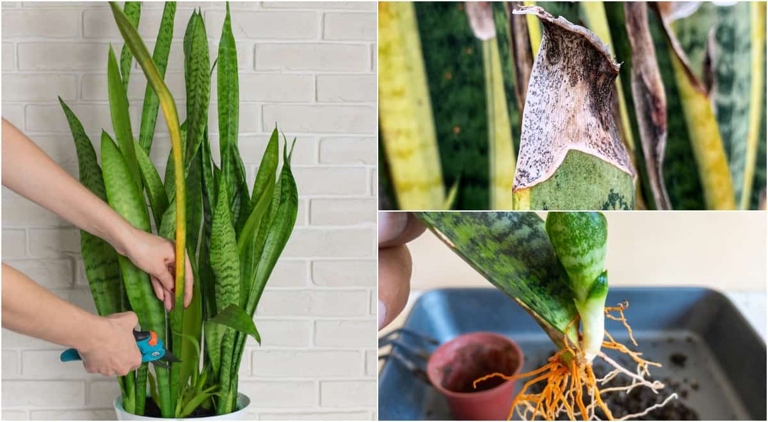
Another solution is to water the plant more frequently. This will help to flush out the roots and will also help the plant to take up more water. Be sure to water deeply so that the water reaches the roots.
Be sure to follow the directions on the fertilizer package so that you do not over-fertilize the plant. If your snake plant is showing signs of stress, you can also try giving it a fertilizer boost. Use a fertilizer that is high in nitrogen to encourage growth.
[5] Snake Plant Roots above the Soil
If you notice that your snake plant’s roots are growing above the soil, it’s a good idea to take action. This is a condition called root bound, and it can be detrimental to your plant.
The roots become constricted and can’t properly absorb nutrients and water. Root bound occurs when a plant’s roots have outgrown their pot or container. This can lead to stunted growth, yellowing leaves, and eventually death.
If you suspect your plant is root bound, the best solution is to transplant it into a larger pot. You can also try pruning the roots to encourage new growth. Be sure to loosen the roots before replanting.
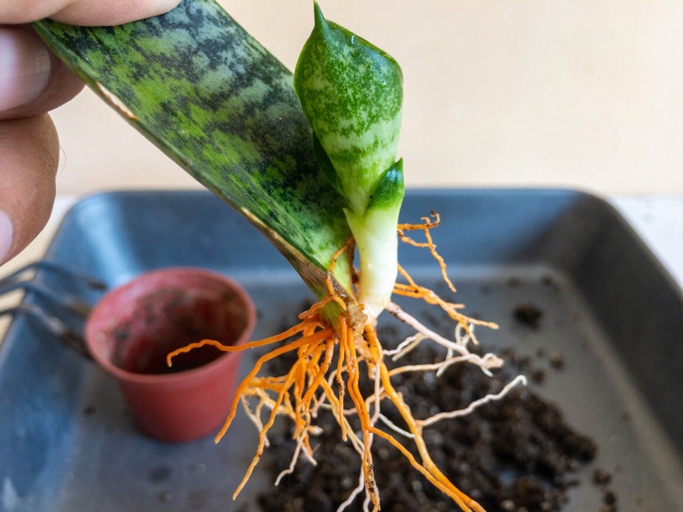
With a little care, you can keep your snake plant healthy and thriving. Pay attention to the roots and take action if you see them growing above the soil.
[6] Cracks in the Pot
If you notice your snake plant’s leaves beginning to droop and the soil is dry, it’s time to water your plant. However, if you see cracks in the pot, this is a sign that your plant is root bound.
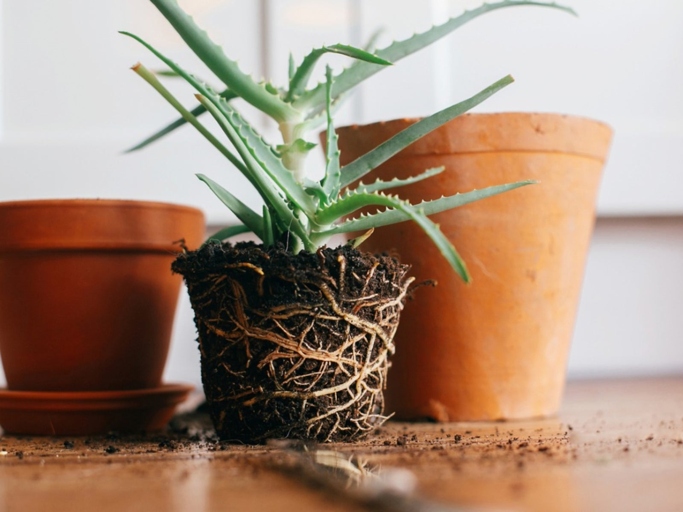
Root bound occurs when a plant’s roots have become too large for the pot it’s in. The roots will begin to circle the inside of the pot and eventually push against the sides, causing the pot to crack.
You’ll also need to loosen the roots before placing the plant in the new pot. If you notice your plant is root bound, you’ll need to repot it into a larger pot. Be sure to use a pot that is only slightly larger than the current one, as you don’t want the roots to have too much room to grow.
Once you’ve repotted your plant, water it well and place it in a location where it will receive bright, indirect light. With proper care, your snake plant will soon be back to its healthy self.
[7] Scorched or Browned Leaves
If you notice that your snake plant’s leaves are looking a bit scorched or browned, it’s likely due to one of two things: either the plant is getting too much sun, or it’s root bound.
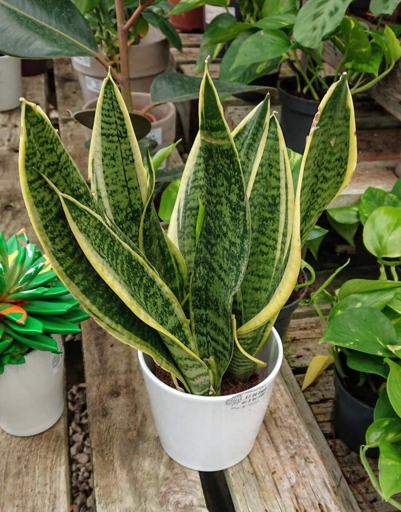
If the plant is getting too much sun, the solution is simple: move it to a spot that gets less direct sunlight. If the plant is root bound, however, the solution is a bit more complicated.
Once you’ve done that, you can replant the snake plant in a pot that is just slightly larger than its original one. To fix a root bound plant, you’ll need to carefully remove it from its pot and loosen up the roots a bit.
With a little bit of TLC, your snake plant will be back to its healthy self in no time!
[8] Roots Emerging Through Drainage Holes
This means that the roots have become so tightly packed that they’re constricted and can’t grow any further. Be sure to loosen the roots before replanting to encourage new growth. If you notice your snake plant’s roots emerging through the drainage holes in the pot, it’s a sign that the plant is root bound. Root bound plants are often unhealthy and can’t absorb nutrients and water as well as they should. The best solution is to repot the plant in a larger pot with fresh potting mix.
How to Check the Root System of your Snake Plant
There are a few ways to check the root system of your snake plant to see if this is the problem. If your snake plant is looking unhealthy, it may be due to a root bound condition. This means the roots have become too crowded and are not able to properly absorb nutrients and water.
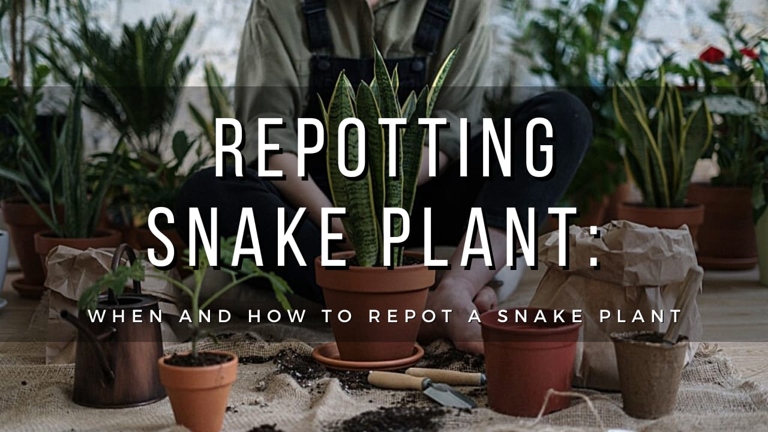
Another way to check is to gently tug on the plant. If it is difficult to remove from the pot, this is another sign of a root bound plant. If they are tightly packed together and appear to be circling the pot, then your plant is likely root bound. First, gently remove the plant from its pot and inspect the roots.
If your plant is root bound, there are a few things you can do to fix the problem. First, you can gently loosen the roots and replant in a pot that is slightly larger. You can also try adding some organic matter, such as compost, to the potting mix to help improve drainage. This will give the roots more room to spread out.
Moderately Root Bound Snake Plant
This can be a problem for the plant, as it can no longer take in the nutrients it needs to stay healthy. A root bound snake plant is a plant that has become constricted by its own roots. The roots have wrapped tightly around the base of the plant, preventing it from growing any larger. There are a few things you can do to help a root bound snake plant.

One solution is to carefully remove the plant from its pot and loosen the roots. Be careful not to damage the roots as you do this. This will give the plant the room it needs to grow. You can then replant the snake plant in a larger pot with fresh soil.
This will give the plant the space it needs to grow, but it may not be as aesthetically pleasing. Another solution is to simply cut away the constricting roots.
If your snake plant is root bound, there are a few things you can do to help it. Remove the plant from its pot and loosen the roots, or cut away the constricting roots. These solutions will give the plant the room it needs to grow and thrive.
Root Bound Snake Plant
However, if your snake plant becomes root bound, it can start to experience some problems. They can survive in a wide range of conditions and don’t need a lot of care. If you’ve ever owned a snake plant, you know that they’re pretty tough plants.
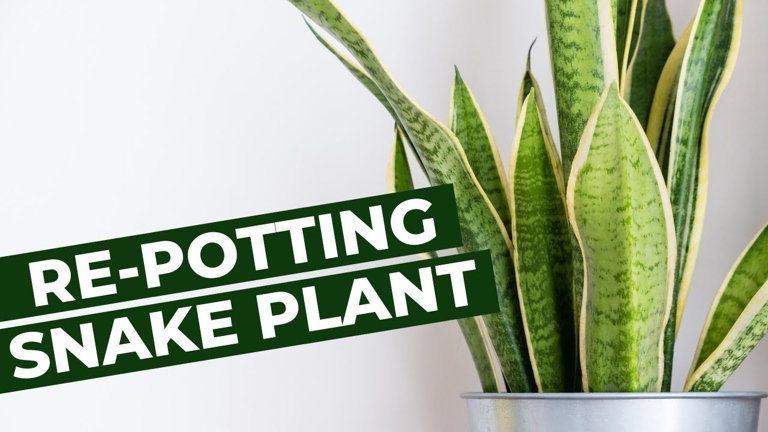
Root bound means that the roots of the plant have become too crowded and are starting to choke each other out. This can happen if the plant is in a pot that’s too small or if it’s been left in the same pot for too long.
If your snake plant is root bound, you’ll notice that it’s not growing as quickly as it used to. The leaves may also start to yellow and drop off.
Just repot the plant into a larger pot and make sure to loosen up the roots a bit before you do. The good news is that root bound snake plants can be easily fixed. With some extra room to grow, your snake plant will be back to its old self in no time.
Extremely Root Bound Snake Plant
First, you can try gently loosening the roots with your fingers. With a little care, your snake plant should soon be thriving again. If you have a snake plant that’s extremely root bound, there are a few things you can do to help it. Be sure to water it well and give it plenty of light. If that doesn’t work, you can try using a sharp knife to carefully cut through the roots. Once you’ve loosened the roots, you can repot the plant in fresh potting mix.
Do Snake Plants Like To Be Root Bound?
Snake plants are actually quite tolerant of being root bound and will usually bounce back quickly once they’re repotted into a larger container. This means that the roots have become too crowded in the pot and are struggling to get the nutrients they need. If your snake plant is looking a little bit sad and wilted, it might be because it’s root bound.
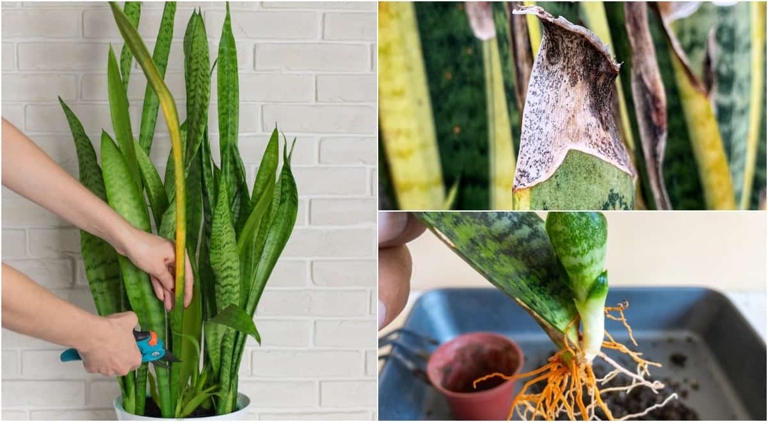
If you think your snake plant is root bound, the best solution is to repot it into a pot that’s about 2-3 inches wider. Your snake plant will likely perk up within a few days and will be back to its usual self in no time. Be sure to use a well-draining potting mix and water it thoroughly after repotting.
Do Snake Plants Like Small Pots?
If you’re thinking about getting a snake plant, you may be wondering if they like small pots. Snake plants are actually quite happy in small pots. So, if you’re using a small pot, make sure to use a pot with drainage holes. The answer is yes! The main thing to keep in mind is that they need well-draining soil.
Root bound plants are when the roots have become so tightly packed that they can’t properly absorb nutrients and water. So, if you want to keep your snake plant healthy, a small pot is a good option. One advantage of keeping snake plants in small pots is that they are less likely to become root bound. This can lead to stunted growth and yellowing leaves.

This can be helpful if you want to change the location of your plant or if you need to bring it indoors during cold weather. Another advantage of small pots is that they are easier to move around.
If you decide to get a snake plant, be sure to give it a small pot with well-draining soil. With proper care, your snake plant will thrive and bring you years of enjoyment.
Treating your Root Bound Snake Plant
But don’t worry, there are some easy solutions! If your snake plant is looking a little bit sad and droopy, it might be root bound. This means that the roots have outgrown the pot and are constricted, which can lead to a whole host of problems.

You can do this with your hands or a small tool like a chopstick. Be sure to use fresh potting mix and water well. Once the roots are loosened, you can replant your snake plant in a pot that is just a bit larger. First, you’ll need to take your snake plant out of its pot and gently loosen the roots.
In either case, root bound snake plants can be successfully treated with a little bit of patience and care. But if the roots are severely constricted, it might take a bit longer for your plant to recover. If you catch your snake plant’s root bound problem early enough, it should bounce back quickly.
Option A: Dividing Your Snake Plants
If your snake plant is looking a bit cramped in its pot, it may be time to divide it. Dividing snake plants is a simple process that can be done in just a few steps.
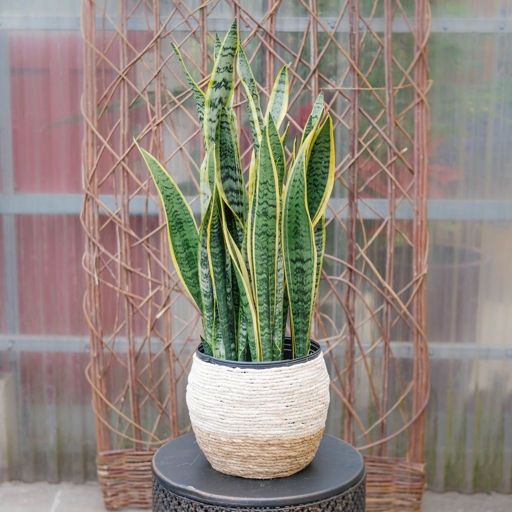
First, remove the plant from its pot and gently loosen the roots. Next, use a sharp knife or garden shears to divide the plant into two or more sections. Be sure to leave enough roots on each section so that it can continue to grow.
Once you have divided the plant, replant each section in its own pot filled with fresh potting mix. Water well and place in a bright, sunny spot. Your snake plant will soon be looking as good as new!
Option B: Repotting your Root Bound Snake Plant
The best time to repot is in the spring, before the plant begins its active growth period. If you notice that your snake plant is becoming pot bound, or if you see roots growing out of the drainage holes, it’s time to repot.
Fill the new pot with fresh potting mix, and place the snake plant in the pot. Be sure to use a pot with drainage holes. Water well, and place the pot in a bright, indirect light location. To repot, choose a pot that is only slightly larger than the current pot.

It’s best to repot snake plants every two to three years. By repotting, you’ll refresh the potting mix and give your plant a chance to continue growing.
Option C: Root Pruning Your Root Bound Snake Plant
If your snake plant is looking a bit sad and droopy, it may be root bound. Root pruning is a great solution for a root bound snake plant. This means the roots have filled up the pot and are constricting, preventing the plant from taking in enough water and nutrients.
Be sure to use fresh potting mix and water well. To root prune, first remove the plant from its pot. Gently loosen the roots and trim away any that are black or mushy. Next, replant the snake plant in a pot that is just a bit larger than the previous one.
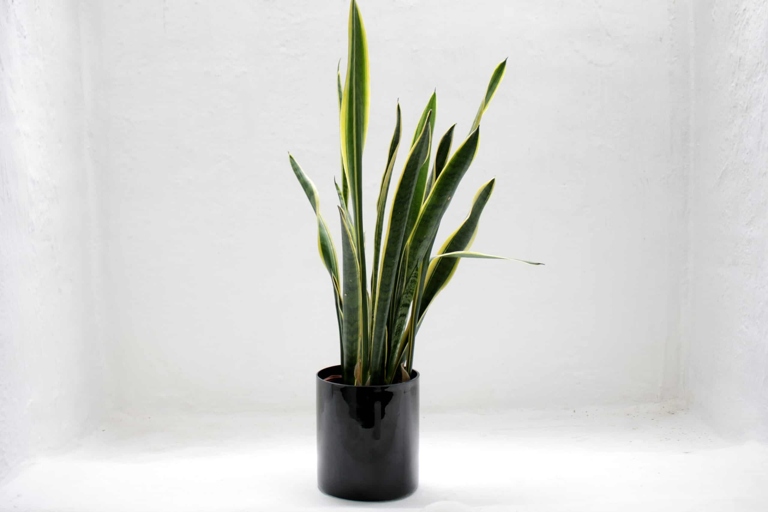
Your snake plant should now have room to grow and will start to look healthier in no time!
How to Prevent Your Snake Plant from Being Pot Bound
This will help to keep the roots from becoming too dry and stressed. A pot that is too small will not allow the roots to spread out, which can cause them to become pot bound. Second, water your plant regularly. First, make sure you choose a pot that is large enough for your plant. If your snake plant is pot bound, there are a few things you can do to prevent it. This will help to keep the roots healthy and prevent them from becoming pot bound. Finally, fertilize your plant regularly.
Frequently Asked Questions
1. What is a root bound snake plant?
A root bound snake plant is a plant that has become pot bound, meaning the roots have become entangled and constricted within the pot. This can happen when the plant is left in the pot for too long without being repotted.
2. What are the symptoms of a root bound snake plant?
The symptoms of a root bound snake plant include leaves that are yellowing or wilting, stunted growth, and roots that are growing out of the drainage holes in the pot.
3. How do you solve a root bound snake plant?
The best way to solve a root bound snake plant is to repot the plant into a larger pot. You can also try to loosen the roots manually, but be careful not to damage them.
4. How do you prevent a root bound snake plant?
The best way to prevent a root bound snake plant is to repot the plant into a larger pot every 1-2 years.
5. What is the best pot size for a snake plant?
The best pot size for a snake plant is one that is only slightly larger than the current pot. A pot that is too large can lead to problems with overwatering.
Final thoughts
If you have a root bound snake plant, don’t worry – there are a few simple solutions. First, you can try repotting the plant in a pot that is 2-3 inches wider than the current pot. You can also try gently loosening the roots with your fingers. If the plant is still struggling, you can try giving it a root hormone treatment. With a little care, your root bound snake plant will be healthy and thriving in no time.
